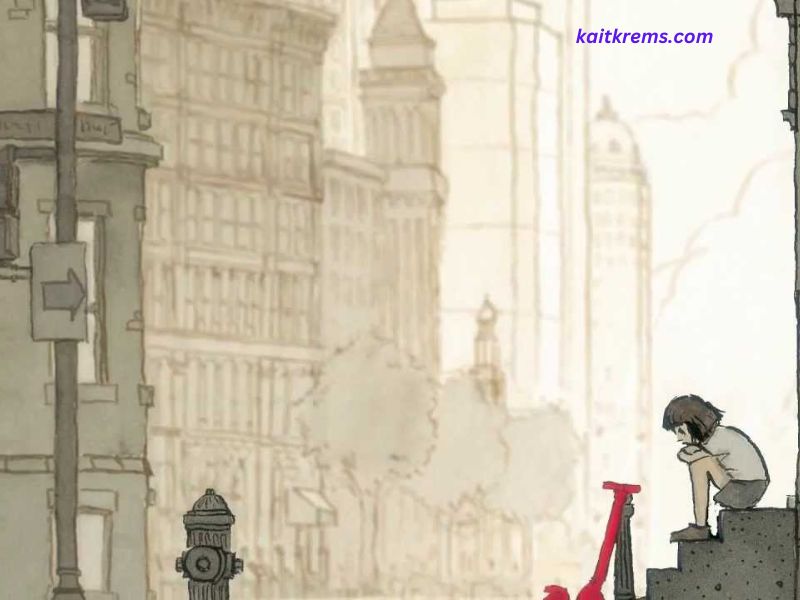Children’s books have always held a unique power to transport young readers into fantastical worlds. But what happens when a story unfolds without a single written word? Aaron Becker’s Wordless Trilogy—comprising Journey, Quest, and Return—is an exquisite example of how captivating storytelling transcends language. Celebrated across classrooms, libraries, and living rooms alike, this trilogy redefines children’s literature as a feast for imagination and interpretation.
Whether you’re a parent hoping to nurture creative thinking, an educator seeking tools for literacy development, or simply a children’s literature enthusiast, Becker’s wordless creations are a must-explore. Today, we’ll uncover what makes this trilogy so exceptional, its impact on young minds, and how to unlock its potential for children worldwide.
Step Into the World of Aaron Becker’s Wordless Trilogy
Aaron Becker’s Wordless Trilogy is a masterclass in visual storytelling. Illustrations take center stage here, weaving tales of adventure and human connection with no need for words. Let’s walk through what makes each book unforgettable.
1. Journey—The Beginning of It All
Meet the young protagonist who feels invisible in her world of muted tones. A discovery of a red crayon allows her to draw a magical door into a vibrant, fantastical land where adventure begins. Themes of courage, escape, and wonder guide the story, as she encounters thrilling landscapes and an emperor who needs her help.
2. Quest—The Next Chapter
The second installment takes us deeper into the magical world. Our heroine, joined by a boy and his purple crayon, is tasked with piecing together a map leading to the return of harmony in the kingdom. This book brims with partnership, teamwork, and a heightened sense of danger that culminates in stunning visual detail.
3. Return—A Bittersweet Last Goodbye
The third volume brings the magic full-circle, reuniting the girl and her father. Reconciliation, self-discovery, and familial bonds define this heartfelt conclusion, as they undertake one last spellbinding quest. With intricate world-building and emotional depth captured through vivid illustrations, this finale leaves a lasting impression.
Together, Journey, Quest, and Return form a trilogy that celebrates the limitless potential of storytelling without words—letting readers of all ages take the lead in creating meaning.
Why Wordless Picture Books Matter
Why should we cherish and champion wordless picture books like Aaron Becker’s trilogy? The benefits go far beyond their mesmerizing visual allure:
- Boosts Imagination: Without written text, children have the freedom to craft their own interpretations and storylines for the images they see.
- Encourages Critical Thinking: Readers actively engage in decoding visual cues, piecing together plots, and identifying emotions.
- Accessible to All Ages and Backgrounds: Wordless books transcend language barriers, making them accessible to diverse learners and multilingual households.
- Fosters Communication: Reading together prompts discussions and shared interpretations, strengthening bonds between children and adults.
Educators and parents often find that wordless books like Becker’s encourage children to collaborate, discuss, and connect over their shared storytelling experiences.
What Experts Have to Say
Educators and child development experts consistently note the ability of wordless picture books to foster creativity and language development. Jennifer Thompson, an early childhood literacy specialist, states, “The Wordless Trilogy has become an essential teaching tool in every classroom I’ve worked in. The stunning vistas give children the freedom to narrate in their own words, building confidence as storytellers.”
Psychologists even suggest that exercises in wordless storytelling help develop finer neural connections in young brains. Engaging imagery stimulates the same creativity-centered areas of the brain that are key to problem-solving and narrative thinking.
Furthermore, studies by Education Weekly affirm that picture-led storytelling contributes to more nuanced emotional expression, as children often describe or “act out” emotions based on visual context.
How to Use the Wordless Trilogy with Children
Here are actionable tips for parents and educators looking to make the most of Becker’s masterpiece:
1. Turn Reading into an Interactive Activity
Encourage your child to narrate the story in their own words. Ask questions like, “What do you think is happening here?” or “How do you think she feels?”
2. Pair with Creative Projects
Invite children to draw their own adventures inspired by Becker’s world. What magical crayon would their character wield? What new lands would they explore?
3. Build Vocabulary Through Storytelling
While the trilogy itself contains no words, tying descriptive language to the visuals can expand vocabulary. For example, describe a scene as “majestic” or “mysterious” and introduce new ways to express emotions.
4. Connect the Story to Real-Life Lessons
Discuss the core themes of the books—friendship, problem-solving, and courage. Relate these to your child’s daily experiences, deepening their understanding of relatable concepts.
5. Start a Visual Journal Together
Ask kids to compile their interpretations of the trilogy through sketches, notes, or summaries. This combines visual and written storytelling in creative ways.
By approaching this series as an interactive storytelling opportunity, you’ll help children tap into their creativity and literacy at once.
The Power of Illustrations in Storytelling
Aaron Becker’s Wordless Trilogy shines because of its visual narrative. Every page is a window into vast worlds painted in dazzling detail. Without a single caption or spoken dialogue, Becker’s use of color, perspective, and light tells a richer story than many text-heavy books.
The trilogy opens up new ways for children to focus on visual cues to understand relationships, plot progression, and themes. Younger readers, especially, engage with the storyline through meaningful observation. The absence of words offers opportunities for exploration, interpretation, and discussion—turning pages into gateways for discovery.
If you’re looking for more books with this stunning visual impact, you might also enjoy works by Shaun Tan (The Arrival) or David Wiesner (Tuesday). Consider pairing Becker’s trilogy with these to provide a broader experience in wordless exploration.
Activities to Deepen the Wordless Trilogy Experience
To engage kids further, here are some resources and activities you can pair with the trilogy:
- Activity 1 – Create your own crayon-powered escape. What would happen if you could draw doors to a different world?
- Activity 2 – Host a family or classroom storytelling competition! See who spins the most imaginative tale inspired by one image from the books.
- Activity 3 – Use downloadable coloring pages inspired by scenes from the trilogy (check out Becker’s official site for resources).
- Activity 4 – Organize a group “reading circle” where each participant narrates part of the story based on the imagery.
These interactive ideas transform Becker’s trilogy from simple reading into an immersive and shared learning experience.
Why Aaron Becker’s Wordless Trilogy Belongs in Every Home
The magic of Aaron Becker’s Wordless Trilogy lies in its accessibility, depth, and enduring appeal. It transcends age, culture, and language—an ode to the universal power of imagination. Whether you’re nurturing your child’s literacy, teaching a group of students, or rediscovering the joy of storytelling yourself, these books will provide endless inspiration and joy.
Interested in taking this magical adventure to the next level? Download a PDF activity guide based on the trilogy today! Or, browse more of our favorite wordless picture collections curated for children’s creative growth.






